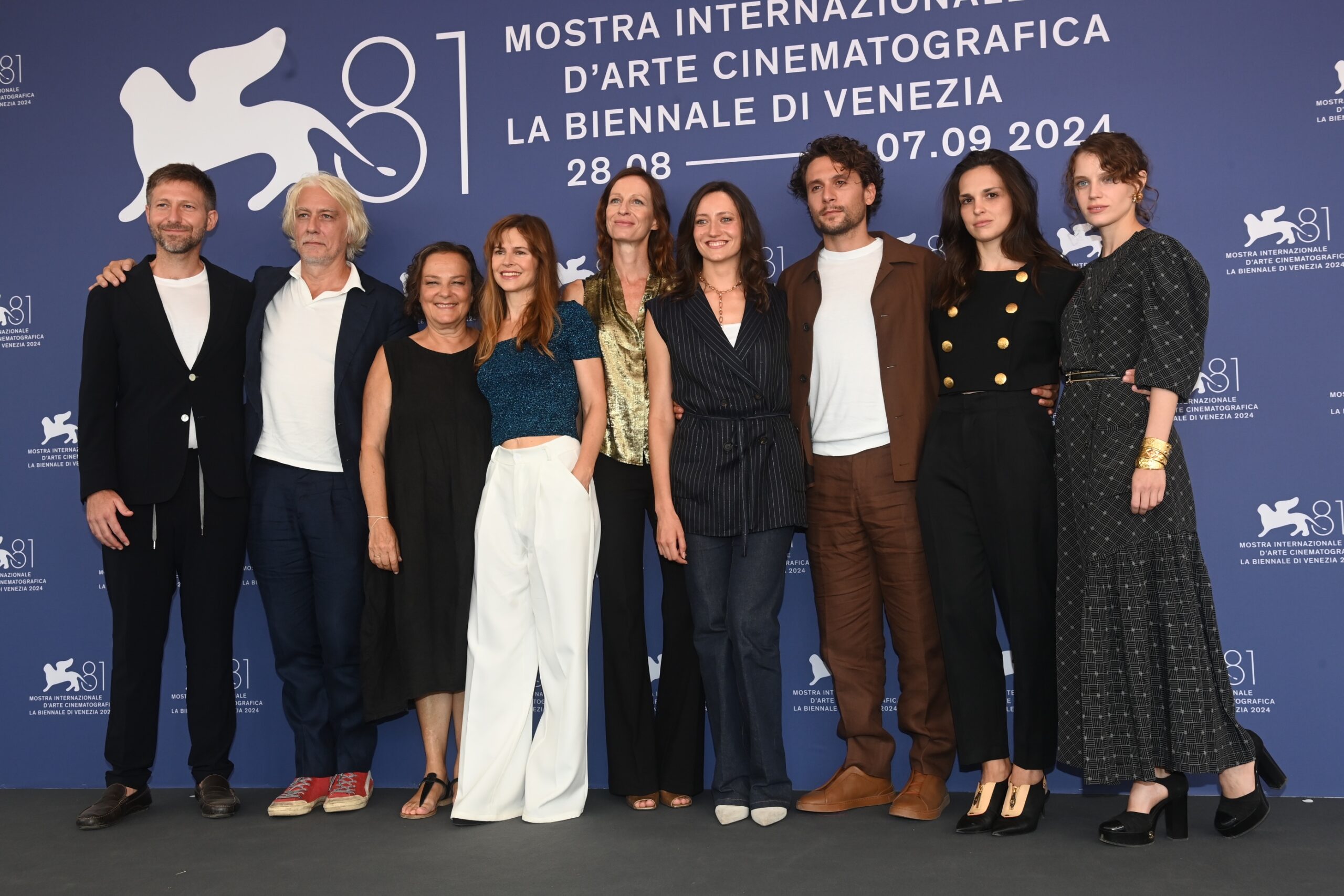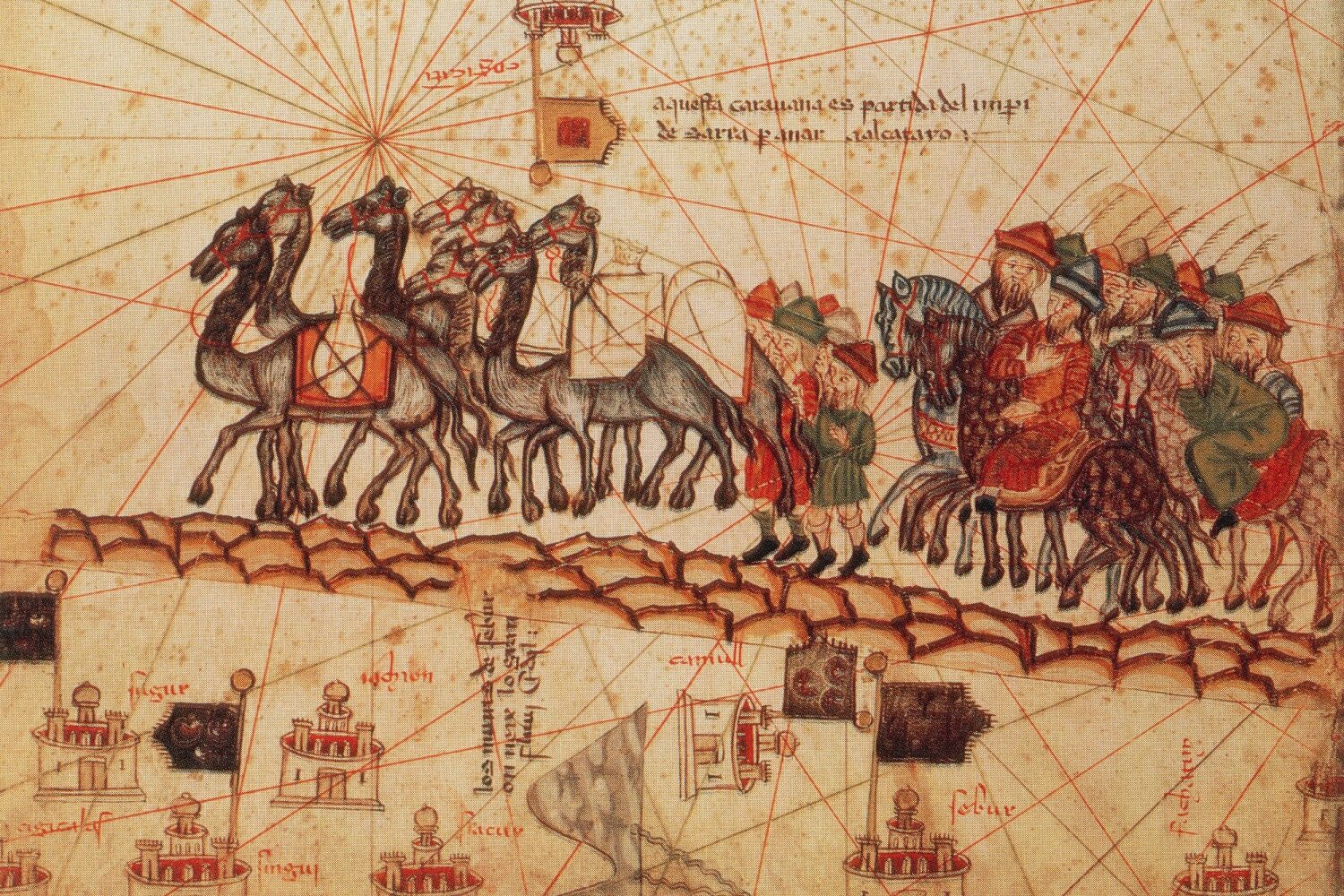A masked parade on the waters of Venice’s canals. The Doge’s ball. Thousands of masks walking around the city. From the party on the Rio del Cannaregio to the parade in Piazza San Marco, where one can see the most beautifully refined costumes. This is the Carnevale di Venezia, and we know it. But among the well known and loved colors of the city at Carnival time, there are other hidden traditions, curious legends characterized by the presence of a naughty elf, who would put to shame even some of Carlo Goldoni’s most outrageous comedies. We’re talking about the Massariol, or Mazariol, an elf that calls the left bank of the Piave river home. He is particularly fond of the woods and forests of the Bellunese, one of the areas Venetians love the most. How to recognize him? A red hood and cloak, long hair, a beard and a natural inclination to play tricks. No malice in his work, though: just a simple, honest playful nature.

Colombina is one of Venezia’s own “maschere” and a protagonist of the Commedia dell’Arte
In many ways, the Massariol embodies the very spirit and heart of Carnevale, a spirit that runs well deeper than dressing up and playing tricks to your neighbor. Think about it: the behavior of this ancient legendary figure, his passion for laughters and jokes, is mirror to Italy’s most popular of Carnevale’s sayings: A Carnevale ogni scherzo vale, everything goes at Carnevale.
But the association between this time of late-winter celebrations and laughter go further back in time than the creation of the Massariol legend, of Doge’s regulations and, would you believe it, even of our Roman ancestors’ pagan habits. To say it better, it refers to some of their lesser known rituals and mores, those that even historians may have forgotten about. You see, the Greeks and the Romans used to worship Ghelus and Risus, divinities of laughter and smiling, because laughing was synonym with fertility and was believed to foresee good fortune. That was the reason why, with a pinch of wisdom and a handful of humor, our ancestors used to say the gods created the world with their laughter.

Masks were originally used to maintain anonymity while playing tricks on others during Carnevale
What a beautiful image this is, when you think about it.
Let’s say something more about the history of Carnevale, though: the first documents attesting its origins date back to the year 1000. They explain that the Doge had decided to offer two months of celebrations to the city, in the hope of giving to the poorest Venetians some respite from hardship and more stamina to endure further misery. It wasn’t a new idea, mind. That was exactly what the ancient Romans used to do with their Panem et Circensem, as good old Juvenal would say: the Roman demagogical practice of distributing free or very cheap wheat to the poorest of the poor, and to organize grandiose games and festivals to sweeten the pain and continuous struggling of their lives.

The Carnevale di Venezia is known for the striking artistry of its masks © Maurizio Fabbro | Dreamstime.com
Little by little, this once-off celebration became tradition and part of Venice’s own life: a place for it was found within the liturgic calendar and Carnevale turned into the colorful road leading to the meditative times of Lent. And so, with the consent of both temporal and religious authorities, people continued to celebrate and play, in a time “suspended” between everyday reality and dream, when you could be anyone you wanted, turning the world on its feet and ridiculing the rich and powerful: you only needed a mask to do it (mask, from the Arabic mascharà, which means satire, joke).
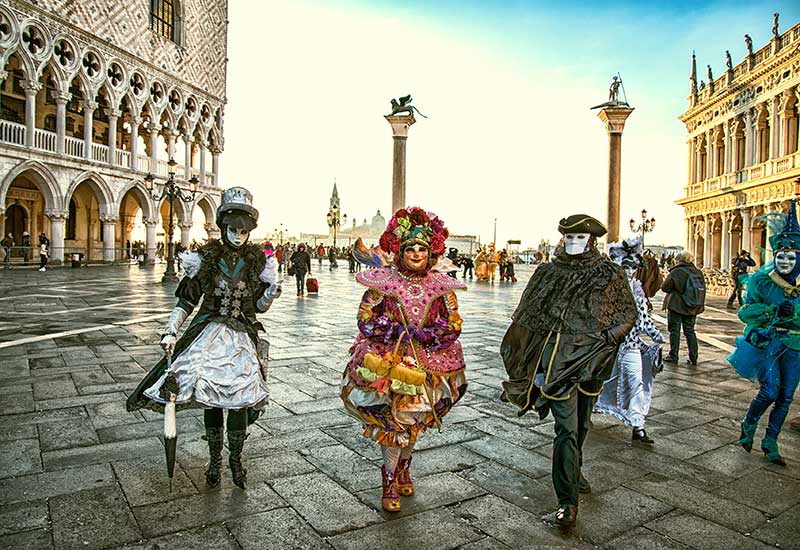
Little by little, this once-off celebration became tradition and part of Venice’s own life
And this is how, between laughter as a symbol of fertility and the Doge’s own rules, Carnevale little by little, became what it is today. In this whirlwind of beautiful costumes that, in time, have become part of our history, just beside the likes of Arlecchino and Colombina, there were also other figures, like the Massariol, surrounded in mystery, but true symbol of local lore and of the very essence of Carnevale: laughter, smiling, irreverence and a tad of subversion, if you will.
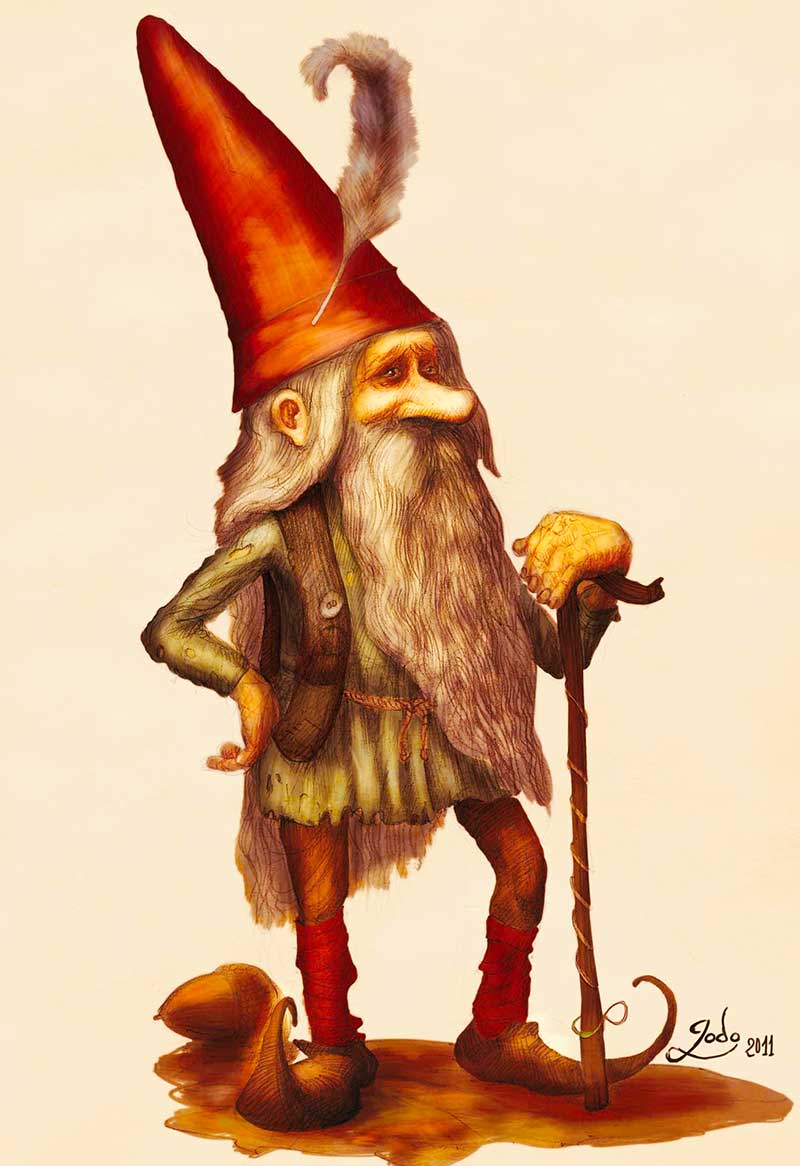
The Mazzariol: traditional figure of Veneto’s lore, it embodies the spirit of Carnevale
And precisely because he was considered “subversive”, during the occupation of the lagoon city, Napoleon forbade Carnevale in 1797. But during its 800 years of history, the Venetian carnival was enriched with customs, and especially masks. Like the Bauta (black veil or tabarro, black tricorn and a white mask called larva, which allowed to drink and eat without ever taking it off) that was also used in everyday life to woo or be courted in mutual anonymity. Or the Gnaga, with its cat-like appearance reminiscent of a sexual and transgressive nature. Or the Moretta, that small dark velvet oval that, in addition to covering women’s face, made them … mute: to wear it you had to support it with your mouth.
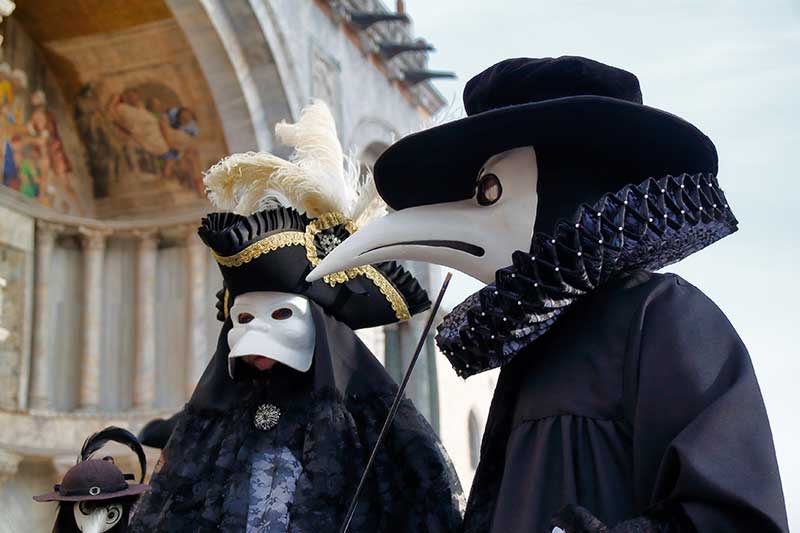
the Bauta black veil or tabarro, black tricorn and a white mask called larva, which allowed to drink and eat without ever taking it off
All to become someone new and mysterious, to move around in disguise and anonymity but also to seduce. La Moretta, actually, did make women quite intriguing and full of secrets. But this is precisely the essence of the Venice Carnevale: lightheartedness, liberation, transgression of social rules, intrigue, libertinism. A law of 1268 that limited the use of masks confirms their use and, above all, the widespread goliardic spirit of Carnevale: the gioco delle ova, which consisted in throwing eggs filled with rose water against the ladies who walked in the streets, was forbidden to mattaccini, men in disguise.

The Massariol fits well in this world made of traditions, heritage and fun. Tradition says he would change shape to reach Venetian women’s voluptuous breasts. It also says he would take advantage of Venetian people’s habit to hang their clothes out to dry to steal them and hang them elsewhere. Throwing stones and people, starting small fires and frightening innocent bystanders were said to be his favorite activities.
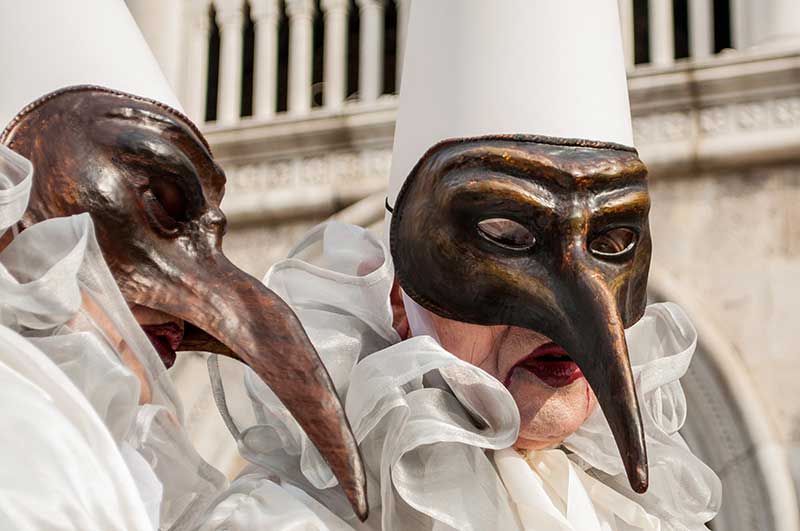
Yesterday as today, both men and women dressed up for Carnevale, their costumes often rich and colorful
And so, the Massariol truly is embodiment of the spirito di Carnevale, but if you look really into it, he is much more than that. Just like the many masks of the Commedia dell’Arte, or the Morette, Baute and Gnaghe that still today populate the streets of La Serenissima this time of the year, he is a colorful symbol of Italy’s own history and heritage. He does not simply stand for local lore and old fashioned crassness, he is the representation of a light hearted way to see life, rooted in the very hardships and restrains of our historical past.
What does, in the end, the cheerful tradition of the Massariol tell us about Carnevale? Well, that its tradition is ancient, of course, and that it grew and developed with the history of the country. But above all, this old elf – along with all the masks typical of Carnevale – represents the irreverent and playful spirit of this time of the year and its strong ties with what’s probably the most wonderful and unique of Italy’s own traditions: that of joy, of smiling and of keeping our ancestors’ habits alive.
May the Massariol, this year, bring many smiles to all those who see it speeding through the forests of Belluno and the colorful and opulent streets of Venice. But please, Massariol: facci sorridere tutti, on both sides of the Atlantic, because laughter, so often, is worth more than gold.




